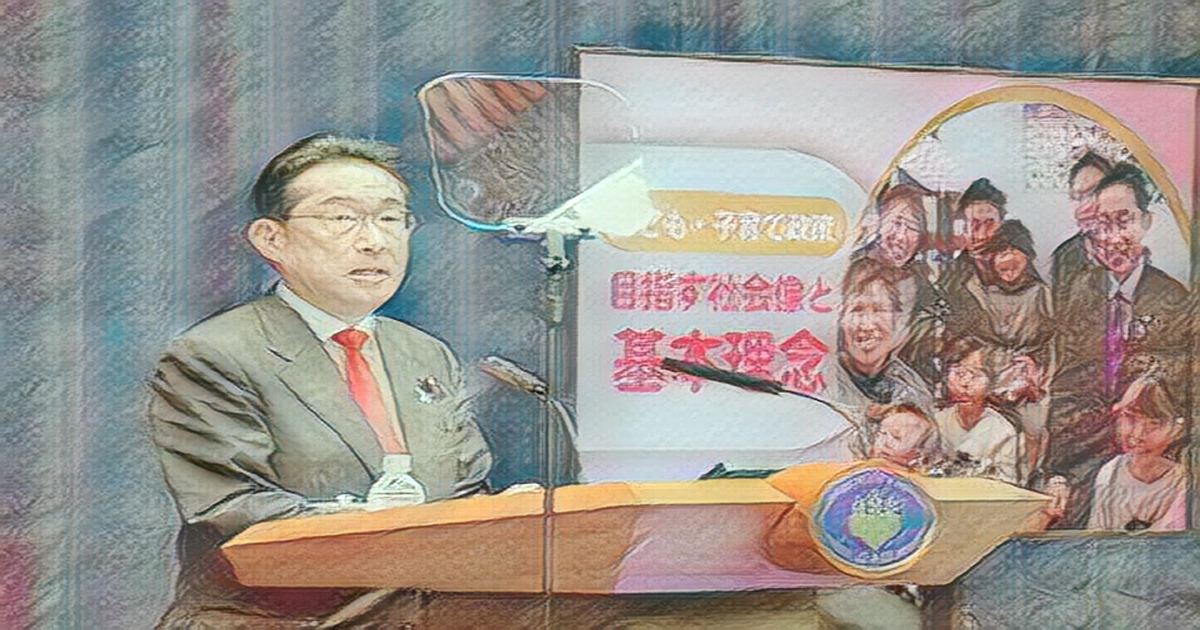
Prime Minister Fumio Kishida spoke about new goals for child care leave at a news conference on March 17. With the clock ticking on dealing with the falling birthrate, the Prime Minister Fumio Kishida has proposed a new solution that will have most of the male workforce taking child care leave by the end of the decade.
Kishida spoke at a news conference on March 17 and outlined broad concepts and major goals to deal with the problem, saying that we must change the overall consciousness and structure of society. The prime minister has set a goal of boosting the ratio of men taking child care leave, seeking a ratio of 50 percent in fiscal 2025 and 85 percent in fiscal 2030.
In fiscal 2021, 14 percent of male employees took leave.
Kishida pointed out that births in 2022 fell below 800,000 for the first time.
He laid out three broad concepts for dealing with the falling birthrate - increasing the income of those in the child-rearing generation, changing the structure and consciousness of the whole society, and providing support to all households raising children.
Kishida said the situation at individual companies would be disclosed, in order to meet the goals of male employees taking child care leave.
He said the government was considering a new program that would provide support for small businesses that pay special allowances to employees who temporarily assume the work of colleagues who take child care leave.
The child-rearing allowance will be raised by the government for a period after the birth of the child. The allowance would be hiked if both parents take child care leave, so the couple wouldn't see a decrease in take-home pay because they are on leave.
The allowance will be extended to irregular employees, freelance workers and self-employed as part of a new program.
The government will consider revising the program for women who work part time to keep their status as dependent on their spouses or parents and not have to pay social security insurance premiums in order to increase the income of child-rearing households.
They have limited the number of hours they worked so that their income does not exceed the limit that would remove them as a dependent. The employees would not be affected by the reduction in take-home pay because they worked more hours.
Kishida also touched on expanding current child allowances and setting up a new program to subsidize housing expenses for child-rearing households.
Revisions will be made to the repayment of student loans to reduce the monthly payments for those who marry and have children.
Kishida said in his first Diet policy speech in January that his administration would compile an unprecedented package of measures to deal with the falling birthrate.
But so far Diet discussions have focused on tinkering with the child allowance program and sources said Kishida had become frustrated that the bigger picture was being ignored, leading to holding the news conference to focus policy discussions.
The measures outlined by Kishida were extremely daunting, but a major hurdle for the administration will be paying for the various programs.
Most of the child care leave allowance is paid for through the employment insurance program, which management and labor make equal contributions.
With the current low level of male employees taking child care leave, allowance payments in fiscal 2021 totaled 645.6 billion yen $4.9 billion a 2.5 fold increase over 10 years ago.
There is a possibility of a deficit in fiscal 2023, but it will not be easy to convince companies to hike their contributions because several tens of billions of yen a year will be required to cover the allowance.
